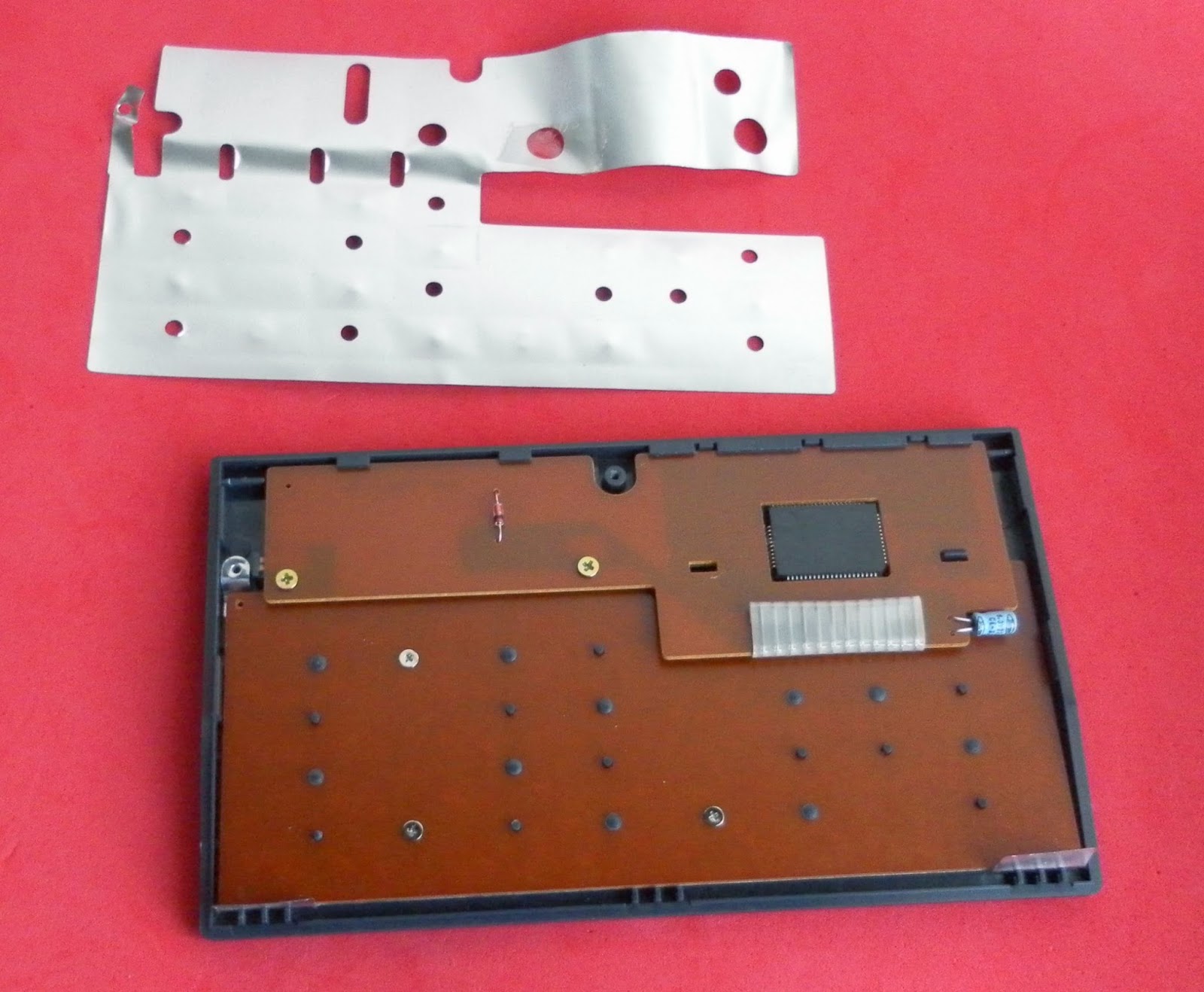Texas TI-1025 Calculator
This calculator was a gift from a seller after bying him a few other Texas machines.It works, but the VFD is barely visible under normal ambient light conditions.
This VFD is a SIPBentPin package, 8-digit 7-segment with DP vacuum fluorescent display and looks like a Itron FG85C1, whose main specs are:
- Nominal supply voltage: 24VDC
- Maximum current/segment: 0.07mA
- 19 pins package
- 2.188"L x 0.788" high.
- Made in Japan.
The SoC is a 28-pin DIP IC Texas TMC0923NL, made in 1979 week 14, in Singapura.
The 9V battery from the power supply is not enough to feed the VFD, as it requires a nominal 24VDC to give an acceptable brightness.
Texas have employed a brilliant idea to generate the required high voltage without involving costly DC-DC converters: A simple voltage multiplier using a few diodes and ceramic capacitors where the input AC voltage is coming from the SoC itself.
In my calculator, the VFD high voltage has about -22.5VDC with a input 54KHz AC voltage of 3VAC coming from pin 26 of the SoC.
The VFD high voltage was measured between pin 1 (+9Vbatt) and pin 27 of the SoC.
Filament in red color...
Current consumption after power ON, single zero digit lit: 14mA
All digits lit: 15mA





































































